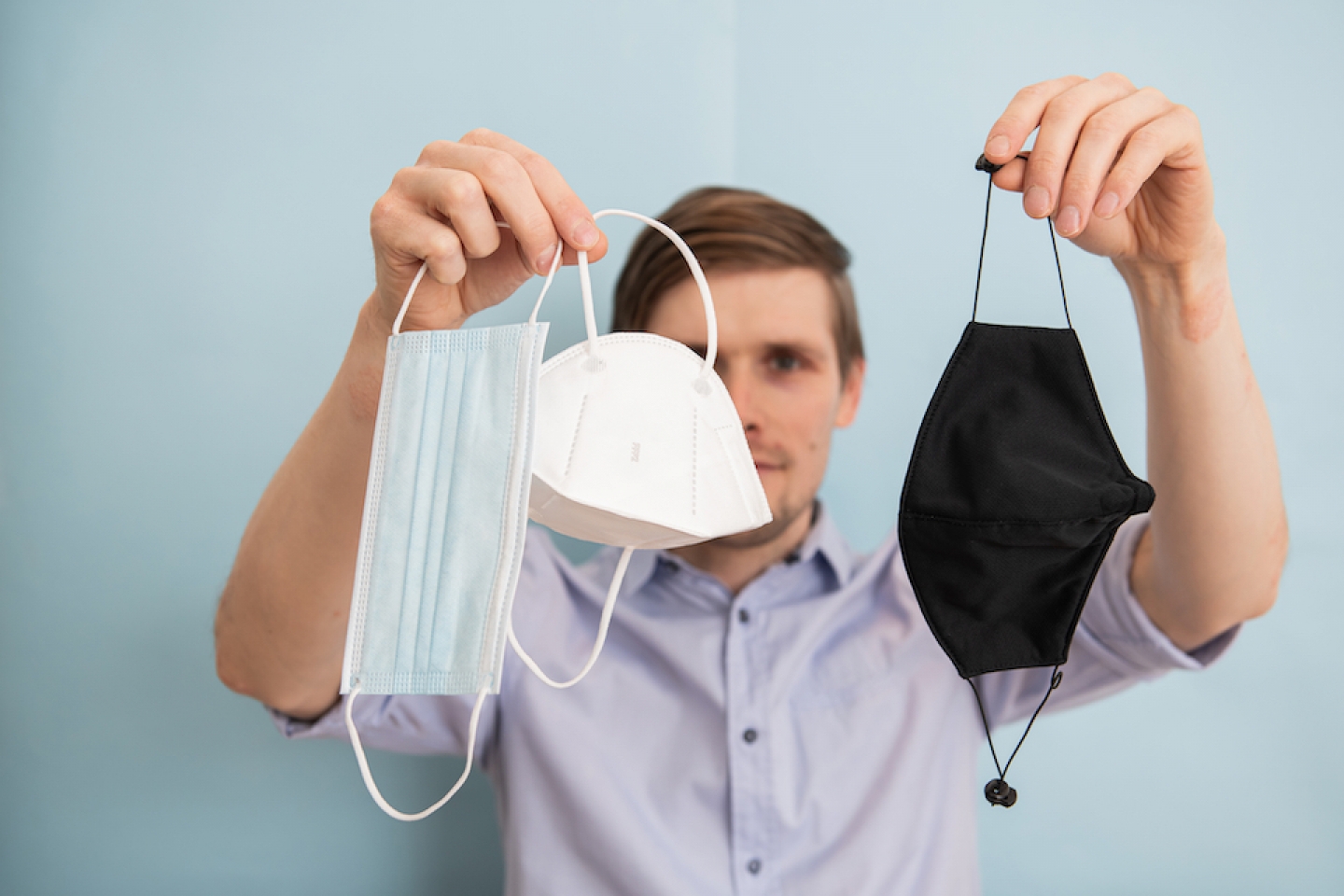
It isn’t just about wearing any old mask. It’s about wearing effective masks. That’s the message that the Centers for Disease Control and Prevention (CDC) has begun to send, as it continues to update its guidance on how to reduce the transmission of the virus that causes COVID-19.
David P. Calfee, MD, MS, chief hospital epidemiologist for NewYork-Presbyterian/Weill Cornell Medical Center, answers questions about mask quality, and why it’s so important for the general public.
The ability of a mask to protect the wearer and to protect those around the wearer—also called “source control”—is related to two important factors: fit and filtration. Masks vary in both of these factors. Fit is important because we don’t want a loose-fitting mask to allow potentially infectious particles to pass around the mask, rather than through it, while the wearer exhales and inhales. Filtration refers to the ability of the mask to trap, or filter, particles. The ability to filter droplets and other small particles differs among the different materials from which masks are made.
Yes—we can increase the level of protection provided by improving the fit of the mask and/or by using a mask with greater filtration. No matter what your mask is made from, achieving a good fit is important. The fit of a mask depends on the mask itself, as well as the shape and other characteristics of the wearer’s head and face.
The CDC has recently described several strategies that can be used to improve the fit of a face mask. One option is to wear a tight-fitting cloth mask over a surgical mask. Another option is to tie knots in the ear loops of a surgical mask, where the ear loops connect to the mask, and tuck in the extra mask material. A CDC study found that these two strategies can reduce a wearer’s exposure by more than 90%. Other recommended strategies include using a mask fitter and wearing a nylon covering over your mask.
Some masks have a greater ability to filter or trap particles, such as those made from tightly woven fabric. Research performed on a variety of masks tells us that cloth masks made of at least two tightly woven layers of fabric are more effective than those made of single layers or of more loosely woven fabric. You can also add a layer of filter material, like a vacuum cleaner bag, between the layers of a cloth mask. Some people use a high-quality surgical or procedure mask approved for general use by the public or a respirator designed with a high filtration capacity.
It is important to note, though, that when we increase the filtration of a mask, it can make it more difficult to breathe through the mask, which could increase the chance that the wearer will remove or adjust the mask during use, potentially reducing its effectiveness.
Masks with exhalation valves should be avoided because the exhalation valve allows exhaled air to bypass the filtering effect of the mask, reducing the mask’s ability to provide source control.
N95 respirators are designed to provide a high level of respiratory protection by providing filtration of very small particles and good fit. Prior to using an N95, the wearer typically undergoes a medical assessment, training, and formal assessment of fit. Achieving a tight fit or seal is critical in order for this mask to function well.
N95s are not recommended for routine use by the general public because there is only a limited supply of them, and they’re needed in healthcare settings.
KF94s are similar to N95s and provide a high level of protection. They’re made of material like that used to make N95s and also do a good job filtering aerosol particles.
These are not currently used in healthcare settings, so it may be easier to get them. But note that they have a high filtration capacity, which may prevent some people from being able to comfortably and consistently wear them.
In addition to wearing masks, I continue to recommend social distancing and hand hygiene as strategies to reduce the risk of COVID-19. We know these measures help reduce the transmission of the virus. I also encourage everyone who is eligible to receive the COVID-19 vaccine to get it when they have the opportunity.
Subscribe to our mailing list to stay up to date on all the latest health news and important updates from Weill Cornell Medicine.